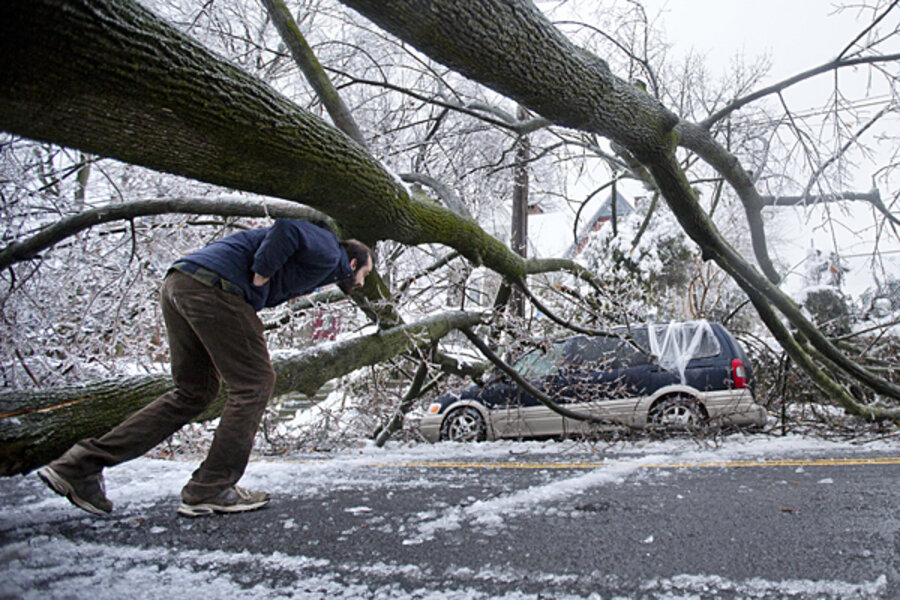Snow, ice leaves 400,000 still without power. Can the grid handle winter?
Loading...
Officials were working to restore power to more than 400,000 customers in southeastern Pennsylvania early Thursday after one of the region's most damaging winter storms. A mix of snow, ice, and freezing rain downed power lines and could continue to interrupt service into the weekend.
It has been a rough winter for the nation's power infrastructure. Unrelenting cold and a swath of winter storms have taken their toll on wind turbines, propane tanks, natural gas pipelines, electricity transmission lines and just about everything else up and down the power supply chain.
The latest storm hit the Philadelphia area the hardest. Snow and ice weighed on power lines or snapped tree branches, which took transmission cables down with them. Though the storm has passed, outages could continue as power lines suffer damage from ice and falling limbs, according to PECO, a utility that serves 1.6 million electric and 497,000 natural gas customers in southeastern Pennsylvania. It was the region's second most damaging storm, according to PECO, behind 2012's superstorm Sandy.
“At the height of this storm, nearly 849,000 customers were without power in Pennsylvania,” Pennsylvania Gov. Tom Corbett said in a statement accompanying a disaster emergency proclamation Wednesday. “This will be a days-long recovery process, and we’re utilizing this disaster declaration to speed up state assistance to all affected parts of the state.”
The winter blasts have wreaked havoc on fuel prices as demand surges and supplies dwindle or are constrained by a lack of pipelines in certain regions. Natural gas prices soared to a four-year high early Thursday, jumping 34 cents to $5.34 per 1,000 cubic feet.
A surge in domestic natural gas production has kept prices historically low and many energy companies have shifted their power portfolios away from coal and toward natural gas to take advantage of the low prices. That places added strain on supplies when cold weather hits because the fuel is increasingly used for both heating and electricity.
Oil prices have also jumped up as a domestic inventory report failed to meet expectations this week. US crude oil was up nearly a dollar to $98.36 in Thursday morning trading. In the Midwest, a propane shortage has put upward pressure on prices. A gallon of propane in the Midwest cost about $3.83, up from about $2.36 a month ago.
The weather is hitting renewable energy as well. Clean Currents, a renewable power provider based in Silver Spring, Md., told customers last week it was ceasing operation after the polar vortex sent wholesale electricity prices skyrocketing. Since residential consumers lock in their electricity rates for an extended period of time, temporary spikes in spot prices are largely absorbed by power providers like Clean Currents.
"We are writing to inform you, with deep regret,that the recent extreme weather, which sent the wholesale electricity market into unchartered territories, has fatally compromised our ability to continue to serve customers," the company wrote in a message posted on its website.








